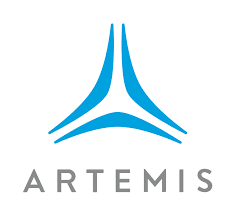Artemis Networks unveiled a new technology this week that delivers 10x the capacity of conventional LTE/5G networks, only using free spectrum in the CBRS band. Known as the pCell, the Private LTE/5G Virtualized RAN (vRAN) averages more than 1 Gbps per second data speeds in 20 MHz of spectrum and more than 7.5 Gbps in 150 MHz.
The pCell, which stands for personal cell, gives each mobile device its own, unshared coverage area that follows the device as it moves. The personal cell is created using “constructive interference,” according to Artemis. Through the personal cell, all mobile devices can use 100 percent of the spectrum capacity at once, regardless of location, as opposed to traditional cellular, which divides the spectrum and reuses it multiple times within the coverage area.
On the other hand, in many points of each cell, cellular systems suffer from low signal-to-noise ratios because of “incoherent intercell interference,” according to Artemis.
Artemis also announced the first large-scale pCell private vRAN installation in the SAP Center, a 140,000 square foot, 20,000-seat arena located in San Jose, CA. The company claims it is the world’s first venue with a Gigabit Private LTE/5G Network. It uses 20 MHz of general authorized access CBRS spectrum and is claimed to outperform existing carrier networks that use more spectrum.
Steve Perlman, Artemis Founder & CEO, said, “The pCell vRAN delivers consistent 4K streaming in both directions, enabling a new class of applications, such as photo-realistic Extended and Augmented Reality interactively streamed to thousands of users, regardless of density.” The pCell Gigabit Private LTE/5G network is currently in use by beta test attendees during games and events and will open to all attendees later this year.
The SAP Center’s arena bowl has a Cellular DAS for mobile operators that uses 32 remote radio units (RRUs), which were carefully aimed and power balanced to create seven cells that avoid interfering with each other. Meanwhile, the Private LTE/5G vRAN in the SAP Center uses 28 pWave RRUs to create interference throughout. The 28 pWave RRUs’ antenna were roughly aimed around the arena bowl, all transmitting at the same power.
“Despite the rough aiming and no power balancing of pWaves, the desired interference covers the entire arena bowl,” Perlman said. “pCell is cell-free. There is no capacity loss from intercell interference and no overhead loss from cell handovers.”
The pCell wireless technology exploits, rather than avoids, interference, resulting in more network capacity per MHz of spectrum, while remaining compatible with unmodified LTE and 5G phones and devices. The company says more than 100 academic papers have been published about the underlying technology, and it has been awarded 300 patents.
Artemis has endorsements from notable industry leaders. For example, John Sculley, former CEO of Apple and a founding investor of MetroPCS, said that the pCell is one of the “largest technology breakthroughs I’ve seen in my career.” Federated Wireless CEO Iyad Tarazi, said, Artemis holds “enormous potential for high-speed, low-latency use cases.” Craig Moffett, Senior Managing Director of MoffettNathanson, said the pCell upends “everything we’ve been taught about wireless.”
Based in Mountain View, CA, Artemis was founded by Steve Perlman in the early 2000s and incubated for more than a decade by the Rearden Companies.
By J. Sharpe Smith, Inside Towers Technology Editor





Reader Interactions